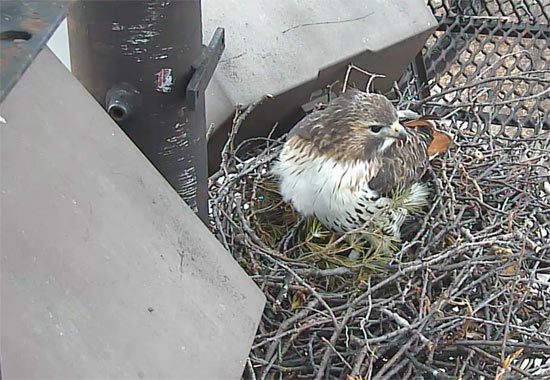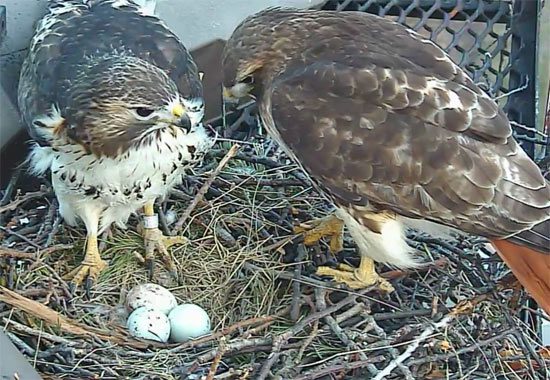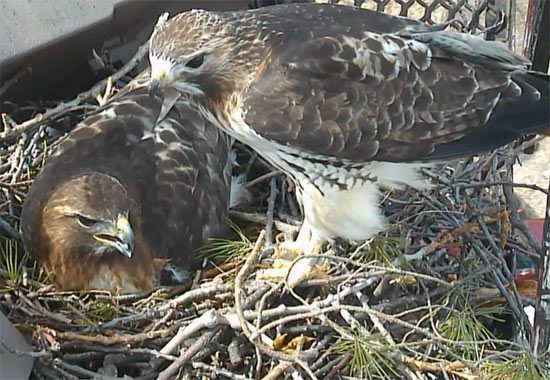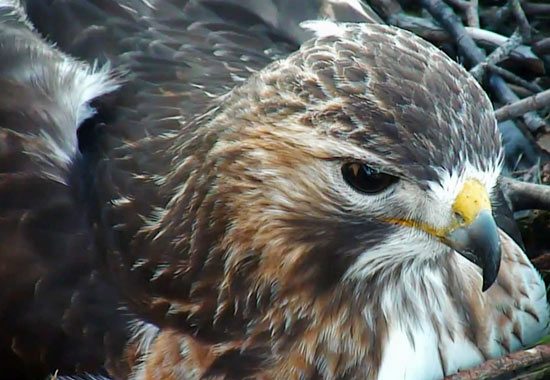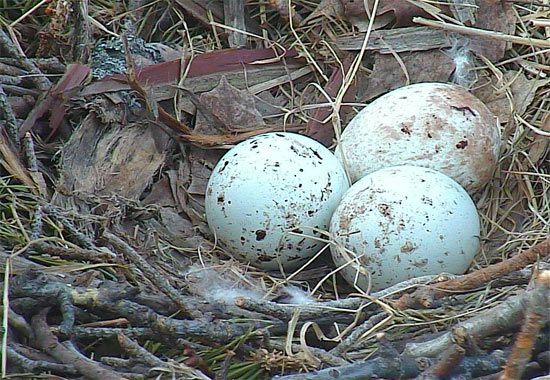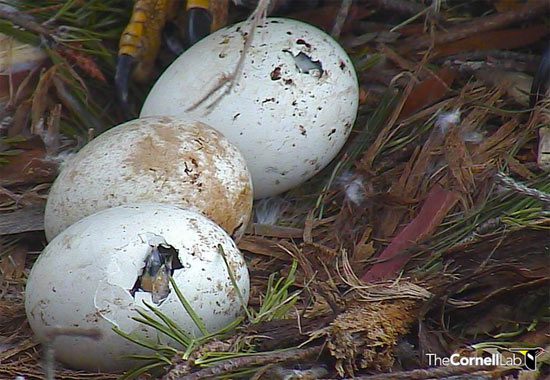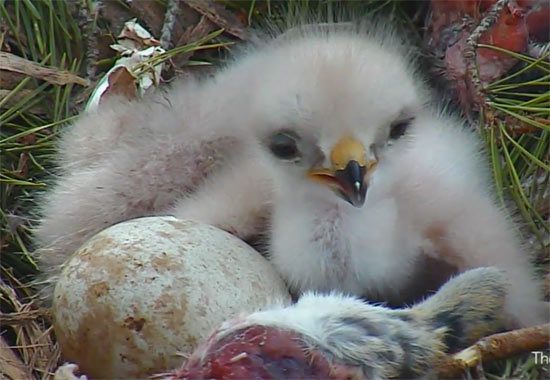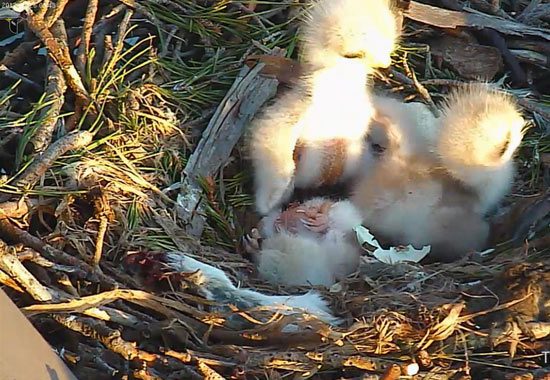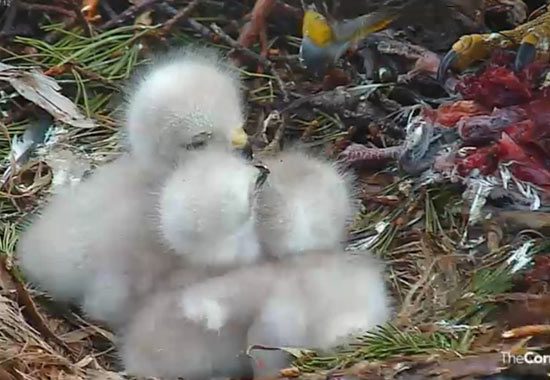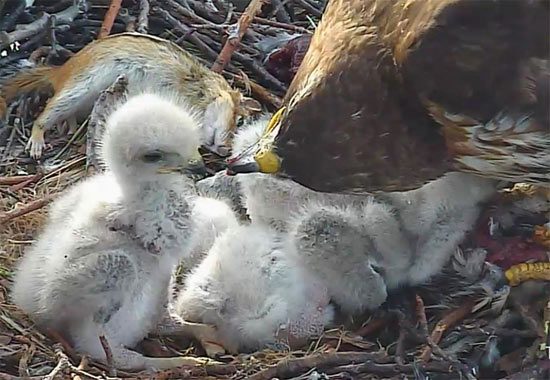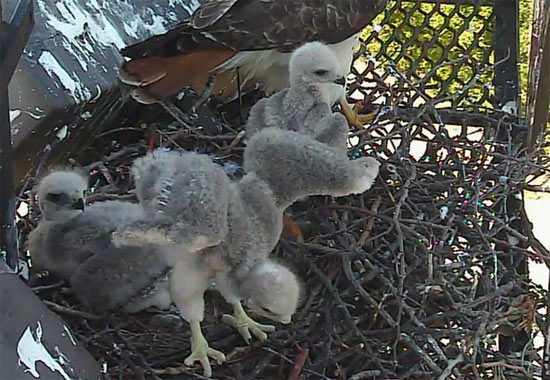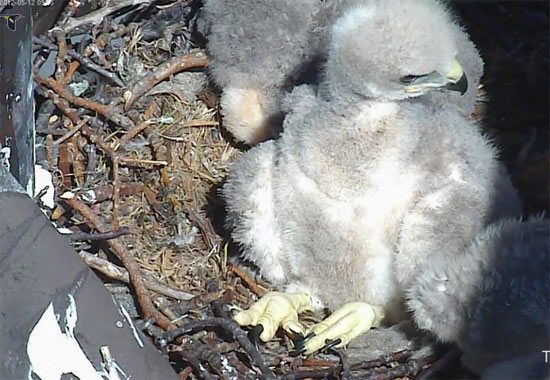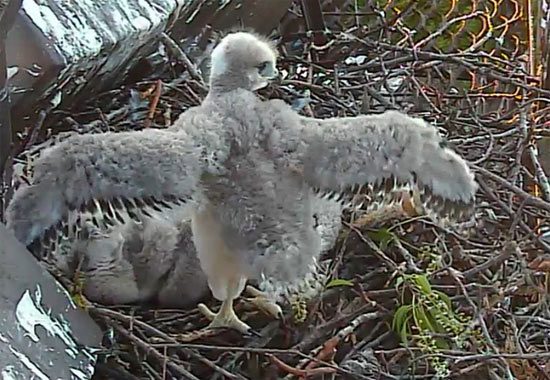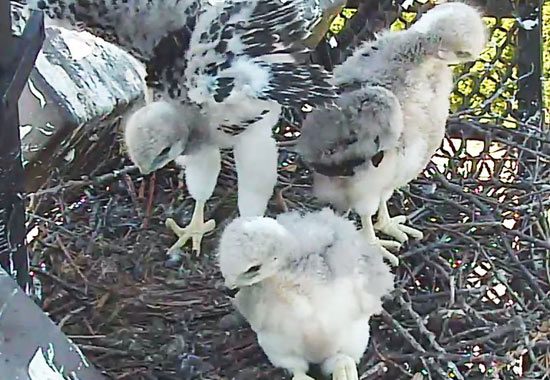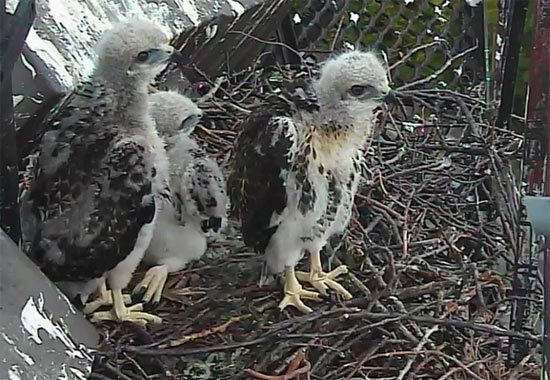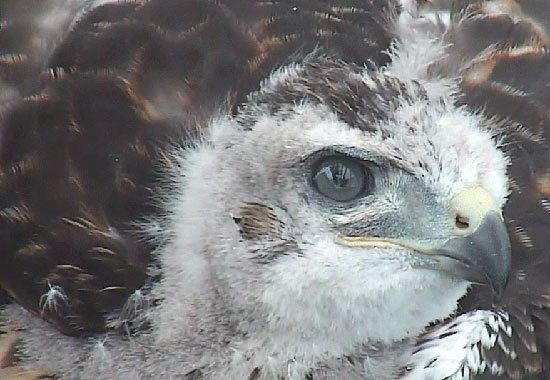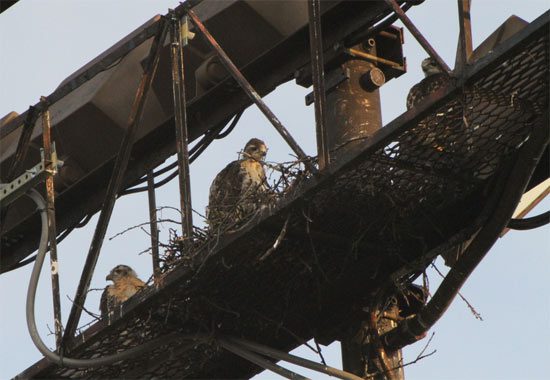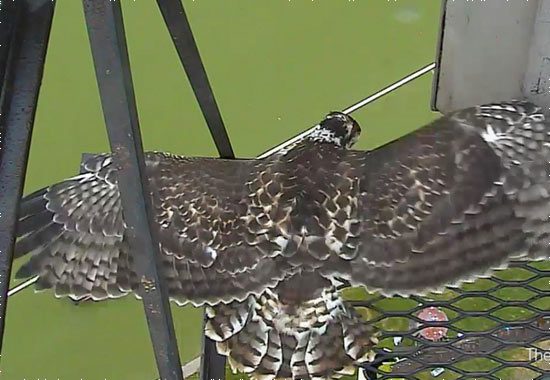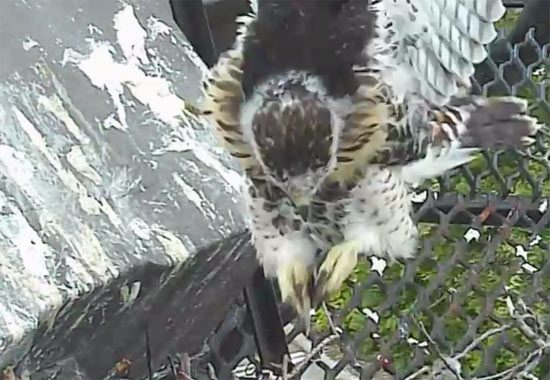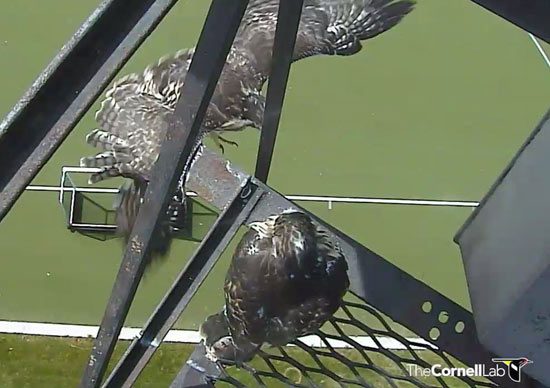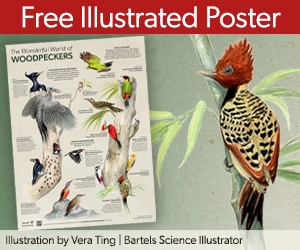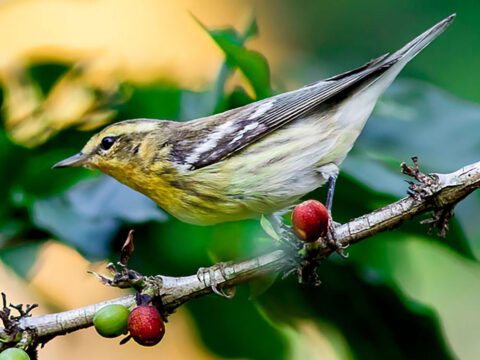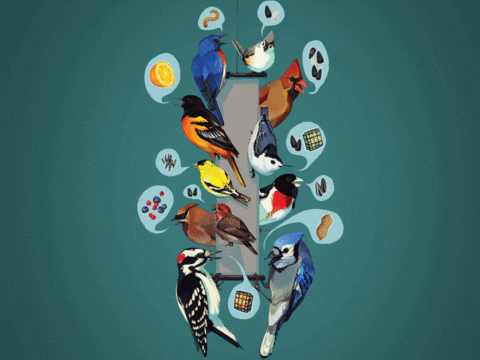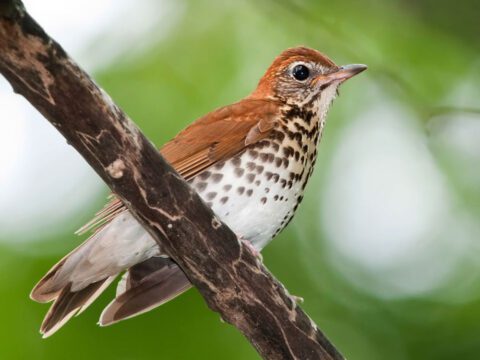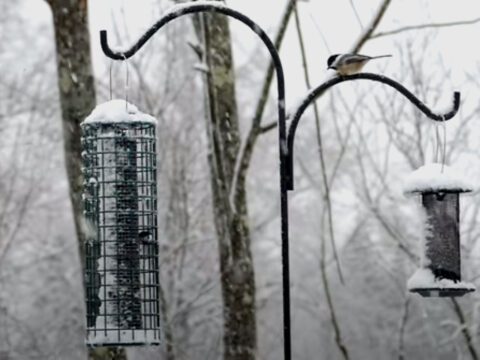Welcome, Red-tailed Hawk Class of 2012 [Slideshow and Videos]
By Hugh Powell June 8, 2012
Ezra brings a pine bough to the unfinished nest 
The two adults inspect the completed clutch 
Big Red incubates as Ezra looks on 
A closeup of Ezra during an incubation bout 
The egg coloration combines pigments and dirt from the adults' feet 
The hatching hawk pecks out of the egg with its egg tooth 
The first hawklet hatched during a rare April snowstorm 
Big Red shields the first nestling from the elements 
Later that day, nestling #1 looks dry and alert 
Two nestlings await food while the third is hatching 
Hatching days apart means the chicks start out different sizes 
All three chicks being fed by Big Red 
The chicks are getting larger, and closer to each other in size 
Wing stretching exercises overlooking campus 
A fluffy nestling basks in the morning light 
Flight feathers are among the first to begin growing 
The darker contour feathers begin to eclipse the downy plumage 
Little by little they begin to resemble adult hawks 
Wisps of down still protrude from between the darker contour feathers 
The view of the nesting platform from below 
Stretching wings at the edge of the platform 
Wing flapping exercises and hopping help prepare the nestlings for their first flight 
The first nestling fledging in the late morning on June 6
This week we saw the first of our three young Red-tailed Hawks leave the nest, with one big step and then a long glide toward the oak trees across the street. The youngster came back the next day, watched one of his siblings fledge, and then took off again—this time looking decidedly more skillful in the air. Since then the fledglings have been back and forth from the nest a few times, and we’re just waiting for fledgling #3 to make up her mind (we can’t be sure it’s a female, but “she” is a bit larger than the other two fledglings, which is what’s behind the speculation).
It’s been a great 11 weeks with the hawk family—as we named and then got to know Big Red and Ezra, watching all kinds of developments along the way. Just before we turn our attention to the herons (which could fledge as early as next week, yikes!), Ospreys, American Kestrels, and Pacific Loons, we wanted to take a look back at some of the highlights.
Some of the key dates:
- February 16: we began the work of rigging the nest cameras on the light pole that holds the nest
- late February: Big Red and her mate started bringing new nest material to their nest
- March 16: Big Red lays her first egg
- March 19: hawk cam broadcasts begin, and Big Red lays her second egg
- Mar 22: Big Red lays her third egg
- April 23: the first of the chicks hatches
- April 25: all three chicks are hatched
- June 6: Chick #1 becomes Fledgling #1
- June 7: Fledgling #1 returns; Fledgling #2 leaves the nest
- June 8: We round out the week with about 4,000 viewers watching to see when chick #3 will leave the nest. Ezra is still bringing food, so it could still be a while
- A devoted “Mombrella” (and “Dadbrella”): Big Red and Ezra withstood more than 10 inches of rain during the nesting season
- Gourmet eating: Among the food that Big Red and Ezra delivered to the nest were red and gray squirrels, chipmunks, meadow voles, moles, Chipping Sparrows, American Robins, and Rock Pigeons. (That’s not an exhaustive list—let us know if you saw anything else!)
As the fledglings soar off into their new life, be sure to stay in touch by signing up for our Bird Cams eNewsletter! We’ll keep you updated with highlights, videos, and new developments as they happen. For now, here are two looks back:
A touching set of video highlights and viewer comments:
And a fast-forward through the progress of the nest, put together with 150 screen captures:

All About Birds
is a free resource
Available for everyone,
funded by donors like you
American Kestrel by Blair Dudeck / Macaulay Library
